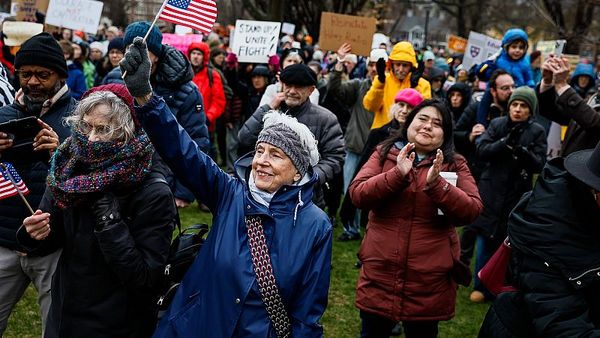
In the southern states, the bushfire advice on days of extreme or catastrophic fire danger is to evacuate early or have a plan to fall back to a community place of safety. But in the Arcadia Valley, 650km north-west of Brisbane in remote central Queensland, the response of locals is still to stay and fight.
“We have tremendous fires here and sometimes you will leave home [to fight a fire] with your swag and you don’t come back for a couple of weeks,” Owen Price says. “We might lose a fire, or fall back to plan B and C, but we’ll contain it somewhere and we’ll stick with it until we get it out. We never give up on fires. We can’t afford to because at the end of the day we are protecting our livelihoods and no one else will do that.”
The Price family graze cattle over 20,000 hectares on a station where the buffel grasslands of the valley are surrounded on three sides by ranges and forest of national parks.
After 12 months of good rain the grasslands in central and northern Queensland, which dry out quicker than timbered areas in the south, have produced a solid bank of fuel, prompting the National Council for Fire and Emergency Services (Afac) to declare these areas as having an increased risk of fire this season.
And a report released on Wednesday by Emergency Leaders for Climate Action (ELCA) and the Climate Council warns that Queensland is increasingly becoming a bushfire state, as global heating disrupts natural climate drivers and shortens the periods of “normal years” between drought, extreme rainfall and flooding.
Fire season is a community event in rural and remote areas. Most landholders belong to a rural fire brigade as well as preparing their own land.
Price, who volunteers with the Tingara Rural Fire Brigade, uses grazing management to keep the highly flammable introduced buffel grass at low levels. He also has a 600-litre water tank with pump and hose mounted on his vehicle and has a fleet of graders and bulldozers on hand to put in firebreaks. This far from town, he knows he can’t rely on outside help.
“It’s just not responsible for me to leave our property at this time of year,” he says.
Further north on the open savannah of Gilberton Station, 450km west of Townsville, Rob French is confident going into the fire season despite the heightened risk. French uses fire as a normal part of management in his 35,600 hectare beef operation.
“Fire is a useful tool if used with respect, but it’s extremely important to burn at the right time,” he says. “Fire returns nutrients to the soil in the ashes of vegetation that could otherwise take years to decompose, keeps ticks and parasites away, and helps destroy invasive weeds. Our burning program also mitigates any major problems with bushfires.”
Lee Johnson is a founding member of ELCA and has a 40-year career ranging from a firefighter on the ground to commissioner of Queensland Fire and Emergency Services. He says while Queensland is known for cyclones and floods, the three worst bushfire seasons on record in terms of property loss have all been in the past six years: 2018, 2019 and 2023.
The worst fire season on record was 2023: from September to November, 1,000 fires burned 1.36m hectares of land. This impacted a third of Queensland’s local government areas, claimed five lives and destroyed more than 180 structures, including 74 homes.
Johnson is concerned 2024 could follow the same pattern.
“After the wet years I was surprised to see the forecast and the seasonal outlook for Queensland,” he says. “I believe there is a quite reasonable chance of rain, but it is very much on a knife-edge, and unless climate pollution is drastically cut we will face ever-increasing dangerous weather bringing destruction to Queensland.”
At the same time, the ELCA report warns, Queensland is facing falling numbers of firefighters as the number of volunteers decrease. It recommends state and federal governments set up a pilot program of paid seasonal firefighters, similar to that operating in Victoria, to support community-led firefighting efforts.
Johnson also says Indigenous land management practices of burning cooler fires earlier in the year, which protects biodiversity as well as reducing fuel load, should play a greater role in the state’s bushfire preparation.
“I would like to see more Indigenous groups work on government-owned country, such as [national] parks, because government is responsible for a large amount of land and staff are often underresourced,” he says.
Price says his brigade worked for 10 weeks on a 2023 bushfire in Carnarvon national park, which burned through 600,000 hectares including significant grass reserves on properties in the neighbouring Arcadia Valley.
“We had eight volunteers and we had a 50km fire front that we had to maintain with our own time, fuel and gear,” Price says. “It wasn’t our fire, but it had to be blocked. It was terrible. People were totally burnt out.”







